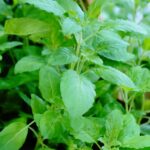Japanese cuisine, known as washoku (和食), is a rich and diverse culinary tradition that emphasizes the use of fresh, seasonal ingredients, meticulous preparation, and a balance of flavors, textures, and colors. Here are the key aspects and dishes that define Japanese cuisine:
Fundamental Elements
- Rice (Gohan)
- Rice is the staple of Japanese cuisine and is often the centerpiece of meals. It is typically plain and served as a base for various dishes.
- Sushi: Vinegared rice combined with seafood, vegetables, and occasionally tropical fruits.
- Onigiri: Rice balls often wrapped in seaweed and filled with various ingredients such as pickled plum (umeboshi), salmon, or tuna.
- Seafood
- Sashimi: Fresh, raw fish or seafood sliced into thin pieces and served with soy sauce, wasabi, and pickled ginger.
- Tempura: Seafood and vegetables lightly battered and deep-fried to a crisp.
- Noodles
- Soba: Buckwheat noodles served either chilled with a dipping sauce or in hot broth.
- Udon: Thick wheat noodles served in various broths, often with tempura, vegetables, or meat.
- Ramen: Chinese-style wheat noodles served in a meat or fish-based broth with toppings like sliced pork, seaweed, and green onions.
- Vegetables and Soy Products
- Tofu: Soybean curd used in soups, salads, and as a meat substitute.
- Edamame: Young soybeans steamed and lightly salted, often served as a snack or appetizer.
- Pickles (Tsukemono): Various vegetables pickled in salt, brine, or a rice bran mixture, used to add flavor and texture to meals.
- Soup
- Miso Soup: Made from fermented soybean paste (miso) and dashi broth, often containing tofu, seaweed, and green onions.
- Clear Soup (Suimono): A light broth often flavored with seafood, vegetables, or meat.
Meal Structure
- Kaiseki: A traditional multi-course meal that showcases seasonal ingredients and a variety of cooking techniques. It typically includes an appetizer, sashimi, a simmered dish, a grilled dish, a steamed dish, and dessert.
- Teishoku: A set meal that includes a main dish (often fish or meat), rice, miso soup, pickles, and a side dish.
Popular Dishes
- Sushi and Sashimi
- Nigiri: Hand-pressed sushi rice topped with a slice of fish or seafood.
- Maki: Sushi rolls with various fillings, wrapped in seaweed and sliced.
- Tempura
- Lightly battered and deep-fried vegetables and seafood, often served with a dipping sauce.
- Yakitori
- Skewered and grilled chicken, seasoned with salt or tare sauce.
- Tonkatsu
- Breaded and deep-fried pork cutlet, typically served with shredded cabbage and a thick, tangy sauce.
- Shabu-Shabu
- A hot pot dish where thin slices of meat and vegetables are briefly cooked in boiling broth and then dipped in sauces.
- Okonomiyaki
- A savory pancake made with flour, eggs, shredded cabbage, and a variety of ingredients such as pork, seafood, and cheese, topped with a variety of condiments.
- Which Fasting food do we take in Nav Durga festival

- Tulsi: nature’s elixir – unveiling the miraculous world of holy basil

- The Benefits of Dry Fruits: A Nutrient-Packed Superfood

Regional Specialties
- Hokkaido: Known for its seafood, dairy products, and miso ramen.
- Kyoto: Famous for its kaiseki cuisine, tofu, and yudofu (hot tofu).
- Osaka: Known for street foods like takoyaki (octopus balls) and okonomiyaki.
- Okinawa: Features a unique cuisine influenced by Chinese, Southeast Asian, and American flavors, including dishes like goya champuru (stir-fried bitter melon with tofu and pork).
Dining Etiquette
- Chopsticks: Used for most dishes; never stick them upright in rice as it resembles a funeral rite.
- Soy Sauce: Pour a small amount into a dish for dipping sushi or sashimi; do not drench the food.
- Respect for Food: It’s customary to say “Itadakimasu” before eating and “Gochisousama” after finishing the meal, expressing gratitude.
Japanese cuisine is celebrated for its emphasis on simplicity, harmony, and seasonal freshness, making it a distinctive and cherished culinary tradition around the world.




